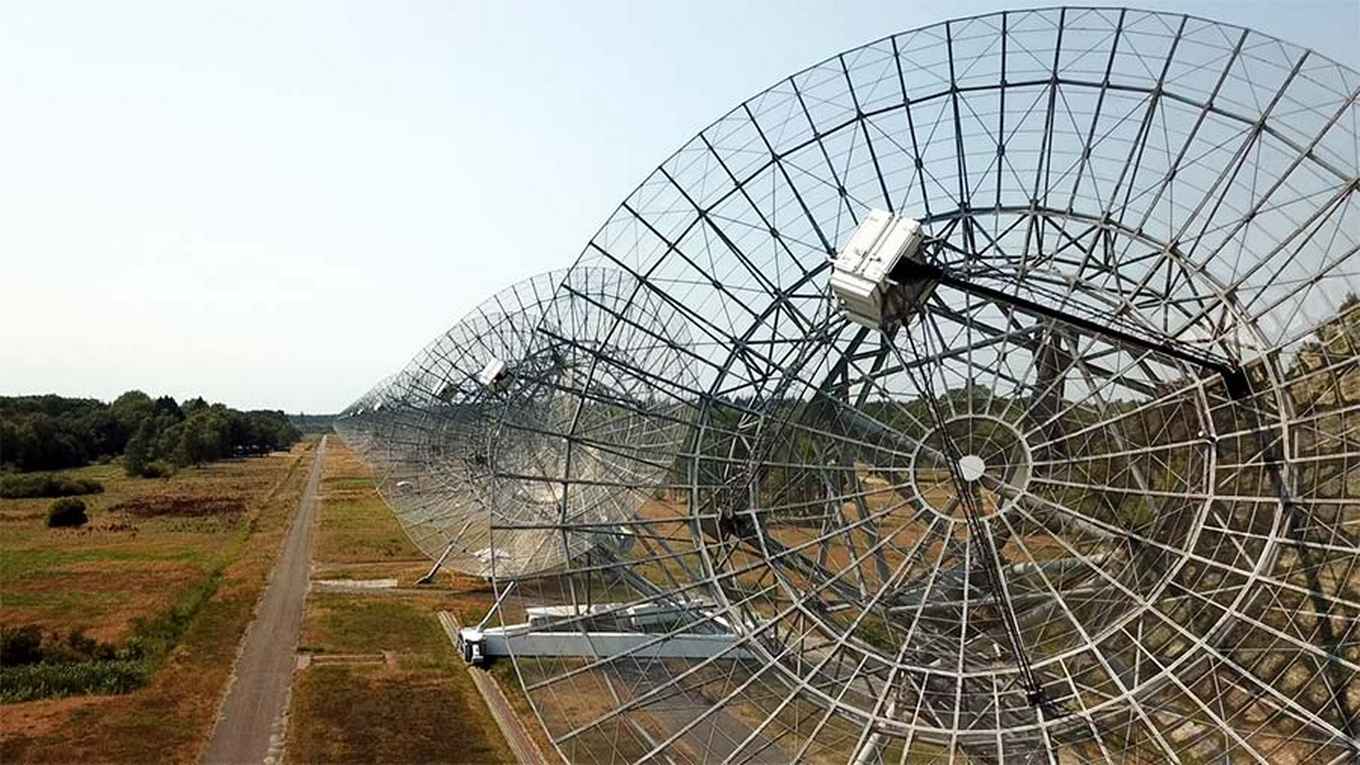Westerbork telescope records first cosmic radio bursts
11 March 2020

Fast Radio Bursts, or FRBs, emit enormous quantities of energy that travel across the universe. However, scientists have yet to identify the source of this bright radio light. As the results from Westerbork show, we are still far from solving this puzzle. The first scientific results from the new high-speed receiver cameras will be published in scientific journal Astronomy & Astrophysics this week.
The discoveries were made by Leon Oostrum, PhD candidate at the Netherlands Institute for Radio Astronomy (ASTRON) and University of Amsterdam 'As these initial results are already showing, FRBs remain a source of many mysteries', Oostrum explains.
In an effort to understand the FRB phenomenon, researchers used the Westerbork telescope to examine the first two discovered radio sources that regularly emit short pulses, known as R1 and R2. R1 was seen to emit a total of 30 pulses, while R2 remained invisible despite 300 hours of observations. Contrary to expectations, R2's behaviour immediately proved entirely different to that of R1. R2 may be invisible because its pulses are too weak, or because it emits radio light in a 'colour' that is undetectable to the Westerbork telescope. In another potential scenario, R2 may have temporarily or permanently stopped emitting pulses. The reason for R2's invisibility is still unknown.
The R1 pulses are the first radio bursts to have been recorded at Westerbork. The telescopes will now start searching for new radio sources. The more bursts the researchers discover, the more they will learn about their origin.
Research leader Joeri van Leeuwen (ASTRON): 'We've reused Westerbork's existing antenna, which means we now have access to an extremely sensitive telescope. We equipped the telescope with a hyper-modern receiver called Apertif and a huge supercomputer, and we can now record the universe at a rate of 20,000 images per second.
Thanks to this full overhaul, the Westerbork radio telescope - owned by ASTRON - has regained its position as one of the world's best radio telescopes. The image is composited from the signals from 12 different antennae, allowing the researchers to create a highly detailed picture of the celestial sky. The new Apertif technology allows them to instantaneously capture detailed images of large expanses of the sky. Whereas other comparable telescopes operate at shutter speeds of 1 second, the Apertif supercomputer can make recordings with multiple images every 1/1000th of a second.
Oostrum: 'That combination doesn't exist anywhere else in the world, and it will be crucial in unravelling the workings of these mysterious fast radio bursts.'